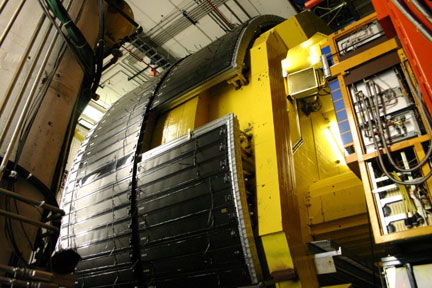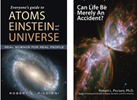In my March 5th newsletter, I noted with
great disappointment that the U.S. Government announced the closure of
the last American particle accelerator, thus conceding world-leadership
in cutting-edge physics. The Tevatron at Fermi National Lab is scheduled
to be shut down in September.
For decades the Tevatron was the world’s
preeminent high-energy physics research facility and the site of most
of the major discoveries that advanced particle physics. With the last
three U.S. presidents unwilling to continue supporting such research, it
now seems likely the Tevatron will be America’s high-water mark in
fundamental physics.
But, even as the focus of cutting-edge physics shifts to Europe, the Tevatron may uncover one last spectacular discovery.
This month, the “CDF” group at Fermi Lab
announced the discovery of something totally unexpected—the very best
kind of new scientific discovery. CDF found a new particle with a
mass-energy of 144 GeV, over 150 times more massive than a proton. One
such particle is almost as massive as an entire atom of tungsten. And
they didn’t just see one of these new particles; they found over 250 of
them. It is even possible that the particle is a boson and the carrier
of a new force of nature.
In the graph below, the red line
indicates what is expected from all known physics (W and Z bosons) and
the blue line highlights the extra “events” from decays of the new
particles. The odds that these events are statistical flukes are
computed to be 1 in 1300.

Blue hump indicates 253 detected newly discovered particles.
Red line indicates events from currently known W and Z bosons.
The data and the analysis presented in
their scientific paper are highly convincing, in my opinion. While
physicists always want more data (who wouldn’t), many previous
breakthrough discoveries were announced with far weaker evidence.
The CDF group says that the production
rate of these new particles is far too high to be the long-sought Higgs
boson. Physicists quote the ease of making any type of particle in terms
of “barns”—the analogy being that it is easier to hit a big target than
a small one. A uranium atom is the biggest imaginable target for a
particle physicist, so that is said to be 1 barn—anyone can hit the
broad side of a uranium atom. A square one trillionth of an inch on each
side is over 6 barns, positively humongous. For these new particles,
CDF says the target size is 4 trillionth of a barn, whereas theory
predicts the Higgs is 300 times harder to produce. Either the Higgs
theory needs revision or CDF has found something totally unexpected and
beyond the Standard Model of particle physics.
Since the CDF announcement, theoretical
physicists have been frantically publishing new theories and revising
old ones; at least one new conjecture is coming out every day. The new
idea I like best is that the new particle (named X, in an act devoid of
originality) is the force-carrying boson of a new fifth force of nature
(the known four forces are gravity, electromagnetism, strong nuclear,
and weak) that links normal matter to dark matter. If so, the machine
the U.S. Government decided wasn’t worth keeping will have made the most
important discovery in particle physics in at least 40 years.
As a study in the evolution of particle
physics, it’s interesting to compare the scope of the CDF (Collider
Detector FermiLab) effort with my own thesis experiment 40 years ago,
both of which are typical of their times. Eight physicists contributed
to my 1971 experiment, which took about 4 years to complete. CDF has
nearly 500 physicists from nearly 100 universities and 17 countries; it has been ongoing for 16 years.
The CDF detector weighs 5000 tons and exceeds 40 feet in height,
length, and depth. A portion of this device is shown in the image below.
I am thrilled that Fermi Lab’s Tevatron
has defied its detractors and instead of going out with a whimper, has
given science one more great bang.

Partial view of CDF detector at Fermi Lab Tevatron.
My thanks to Richard Conn Henry and Bill Kraham for sending me the CDF report.
Regards,
Robert
Dr. Robert Piccioni
www.guidetothecosmos.com
Author of "Everyone's Guide to Atoms, Einstein, and the Universe"
and "Can Life Be Merely An Accident?"

|